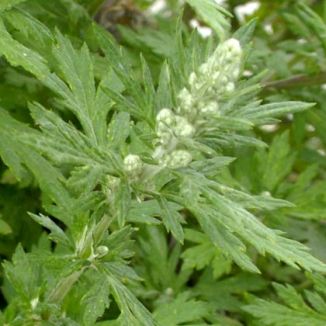This is a tall perennial, reaching over 120cm, which grows on waste places, embankments and dry banks. It is graceful rather than beautiful with silky, reddish–stemmed spikes of dull green leaves, the lower of which are deeply pinnate, the upper being lanceolate and alternate. The underside of the leaves is silvery and woolly. The flowers consist of tiny tubular rayless florets, 2-3mm across, in reddish-brown heads which are carried in tapering, leafy racemes, their stalks emerging from the leaf axils. They flower from May to September. This is a native plant belonging to the family Asteraceae.
My first record of this plant is from 2007 on Dún Laoghaire Pier, Co Dublin and I photographed it there at that time and also at Kilmore Quay, Co Wexford also in 2007.
If you are satisfied you have correctly identified this plant, please submit your sighting to the National Biodiversity Data Centre




